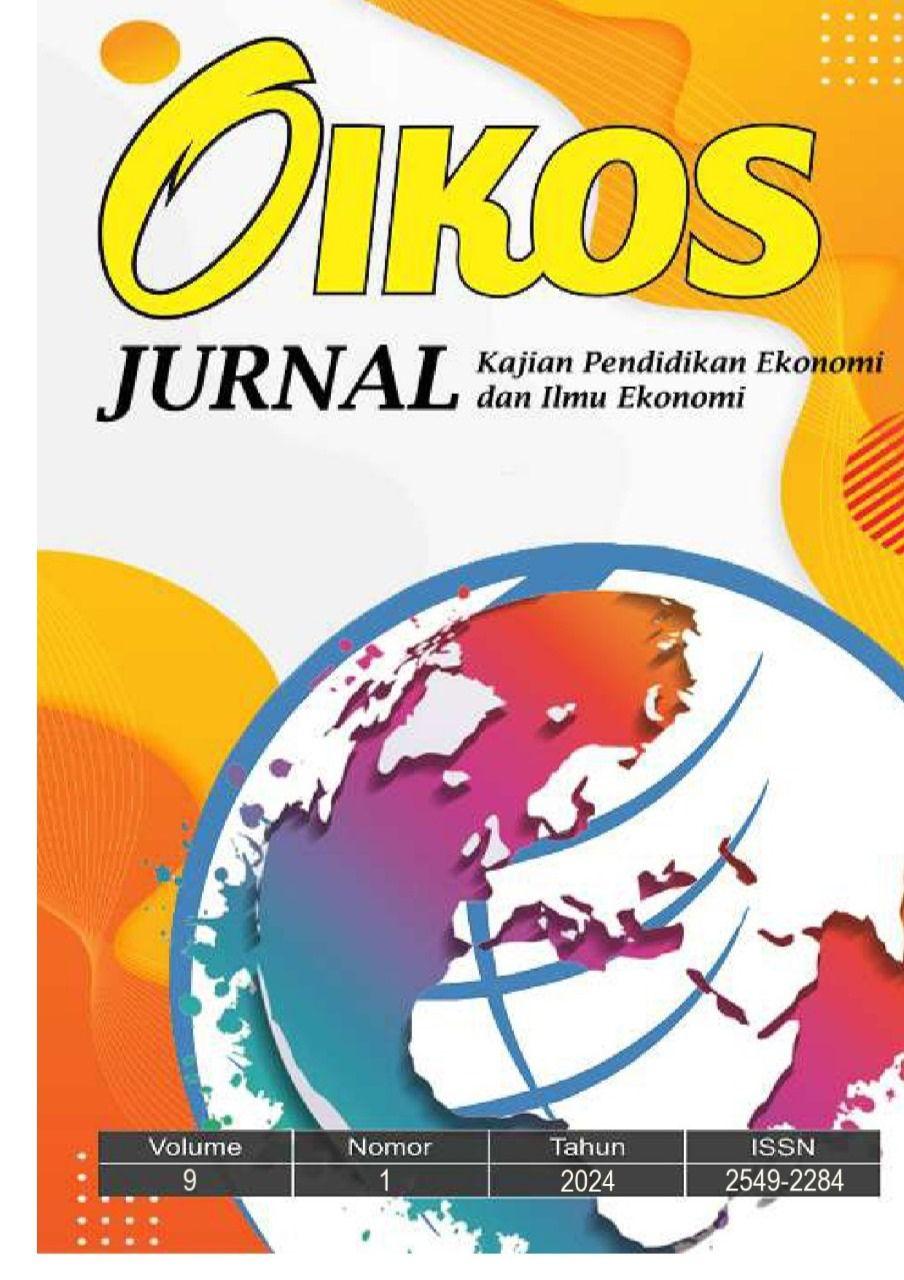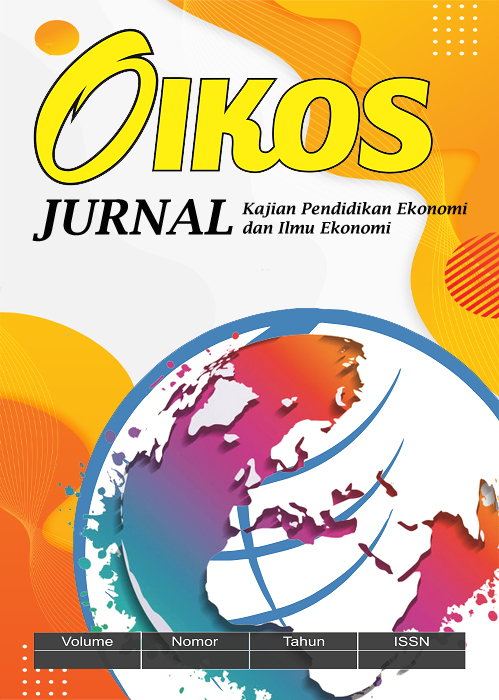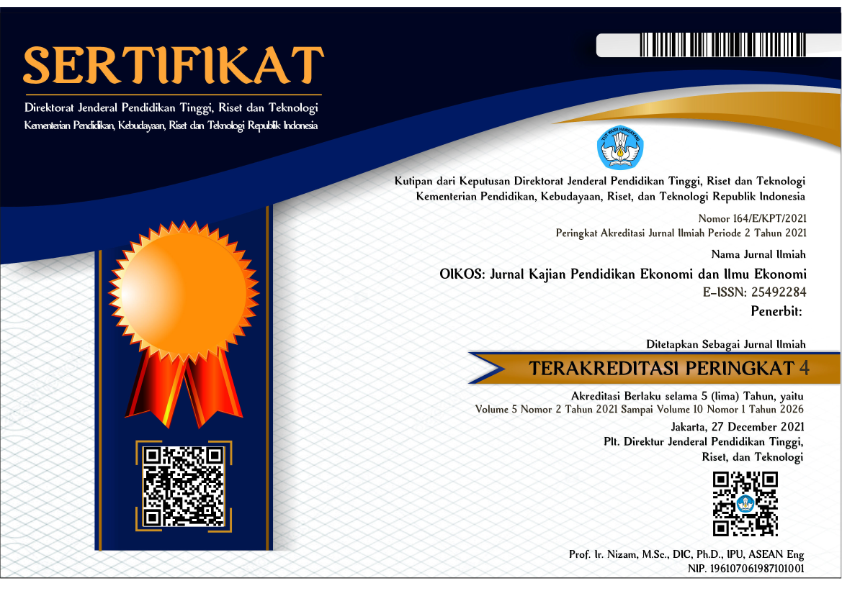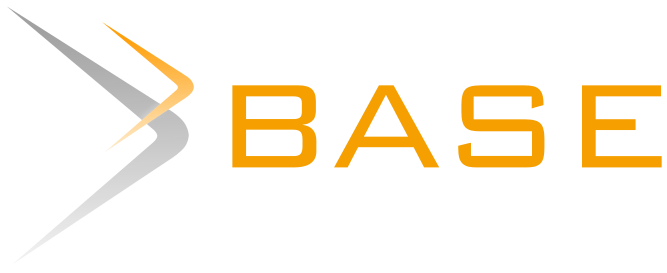Dinamika Ekonomi Surabaya Raya: Studi tentang Dampak PDRB Perkapita, Tingkat Kemiskinan, dan Upah Minimum terhadap Ketimpangan Pendapatan
Kata Kunci:
Ketimpangan Pendapatan1, PDRB perkapita2, Tingkat kemiskinan3, Upah Minimum4Abstrak
Berdasarkan data serta publikasi yang diterbitkan bps diketahui bahwa wilayah Surabaya Raya memiliki jumlah pdrb perkapita diatas rata-rata pdrb perkapita Jawa Timur, namun angka nilai indeks gini masih menunjukka posisi yang tinggi. studi ini mengevaluasi pengaruh PDRB per kapita, tingkat kemiskinan, dan upah minimum terhadap ketimpangan pendapatan di Surabaya Raya, memanfaatkan data sekunder dari Badan Pusat Statistik (BPS) untuk periode 2013-2023. Hasilnya menunjukkan bahwa Surabaya Raya memiliki PDRB per kapita yang lebih tinggi dari rata-rata Jawa Timur namun mencatat Indeks Gini tertinggi di Indonesia, menandakan ketimpangan yang signifikan. Analisis menggunakan model regresi data panel Common Effect Model mengungkapkan bahwa ketiga variabel tersebut secara simultan memiliki pengaruh signifikan terhadap ketimpangan pendapatan. Secara spesifik, PDRB per kapita berkontribusi positif terhadap ketimpangan, diindikasikan oleh perbedaan yang signifikan antara sektor industri dan jasa dibandingkan dengan sektor dengan upah rendah. Sementara itu, tingkat kemiskinan dan upah minimum keduanya mempengaruhi ketimpangan secara negatif, menunjukkan adanya upaya redistribusi pendapatan yang efektif dan kebijakan peningkatan upah minimum oleh pemerintah, yang berperan dalam meredam disparitas pendapatan.
Unduhan
Referensi
Anshari, M., Azhar, Z., & Ariusni, A. (2018). ANALISIS PENGARUH PENDIDIKAN, UPAH MINIMUM PROVINSI DAN BELANJA MODAL TERHADAP KETIMPANGAN PENDAPATAN DI SELURUH PROVINSI DI INDONESIA. Jurnal Ecogen, 1(3), 494. https://doi.org/https://doi.org/10.48108/jurnalbppk.v10i2.26
(BPS), B. P. S. P. J. T. (2021). Analisis Indeks Williamson Provinsi Jawa Tengah 2017-2021.
BPS Yogyakarta. (2020). Analisis ketimpangan pendapatan daerah istimewa yogyakarta 2020. 115.
Farhan, M., & Sugianto, S. (2022). ANALISIS FAKTOR-FAKTOR YANG MEMPENGARUHI TINGKAT KETIMPANGAN PENDAPATAN DI PULAU JAWA. SIBATIK JOURNAL: Jurnal Ilmiah Bidang Sosial, Ekonomi, Budaya, Teknologi, Dan Pendidikan, 1(4), 243–258. https://doi.org/10.54443/sibatik.v1i4.29
Fashuri, R., & Saputra, P. M. A. (2022). ANALISIS PENGARUH UPAH MINIMUM, KEMISKINAN, DAN INDEKS PEMBANGUNAN MANUSIA TERHADAP KETIMPANGAN DISTRIBUSI PENDAPATAN (Studi Kasus di Kabupaten Kawasan Sleingkar Wilis Periode 2010-2019). Journal of Development Economic and Social Studies (JDESS), 1(1), 148–160.
Logaritma, S. (2020). PRODUK DOMESTIK REGIONAL BRUTO PROVINSI-PROVINSI DI INDONESIA MENURUT LAPANGAN USAHA 2015-2019. In BPS (pp. XVIII–146).
Mankiw, N. G. (2023). Principles of Microeconomics : a Guided Tour (Tenth Edit). Cengage 200 Pier 4 Boulevard Boston, MA 02210 USA.
Nilasari, A., & Amelia, R. (2022). Pengaruh PDRB Per Kapita, Indeks Pembangunan Manusia, dan Tingkat Partisipasi Angkatan Kerja Terhadap Ketimpangan Distribusi Pendapatan di Indonesia. https://journal.inspirasi.or.id/index.php/nomicpedia
Sholikah, N. R., & Imaningsih, N. (2022). Analisis Faktor yang Mempengaruhi Ketimpangan Distribusi Pendapatan di Provinsi Daerah Istimewa Yogyakarta Tahun 2012-2021. Jurnal Pendidikan Ekonomi (JUPE), 10(3), 247–253. https://doi.org/10.26740/jupe.v10n3.p247-253
Susanto, R., & Pangesti, I. (2019). PENGARUH TINGKAT PENDIDIKAN TERHADAP KEMISKINAN DI DKI JAKARTA. In Journal of Applied Business and Economic (Vol. 5, Issue 4).
Todaro, M. P., & Smith, S. C. (2020). ECONOMIC DEVELOPMENT ECONOMIC (THIRTEENTH). PEARSON EDUCATION LIMITED.
Yoertiara, R. F., & Feriyanto, N. (2022). Pengaruh pertumbuhan ekonomi, IPM, dan tingkat pengangguran terbuka terhadap ketimpangan pendapatan provinsi-provinsi di pulau Jawa. Jurnal Kebijakan Ekonomi Dan Keuangan, 1(1), 92–100. https://doi.org/10.20885/JKEK.vol1.iss1.art9
Zulfariska, D., & Bariyah, N. (2021). Pengujian Teori Kurva U-Terbalik (Hipotesis Kuznets) di Kalimantan Barat. Prosiding Seminar Nasional Penerapan Ilmu Pengetahuan Dan Teknologi : Kampus Merdeka Meningkatkan Kecerdasan Sumberdaya Manusia Melalui Interdispliner Ilmu Pengetahuan Dan Teknologi : Pontianak, 24 Agustus 2021, 165–184. https://doi.org/10.26418/pipt.2021.33
Unduhan
Diterbitkan
Terbitan
Bagian
Lisensi
Hak Cipta (c) 2025 OIKOS: Jurnal Kajian Pendidikan Ekonomi dan Ilmu Ekonomi

Artikel ini berlisensi Creative Commons Attribution 4.0 International License.









